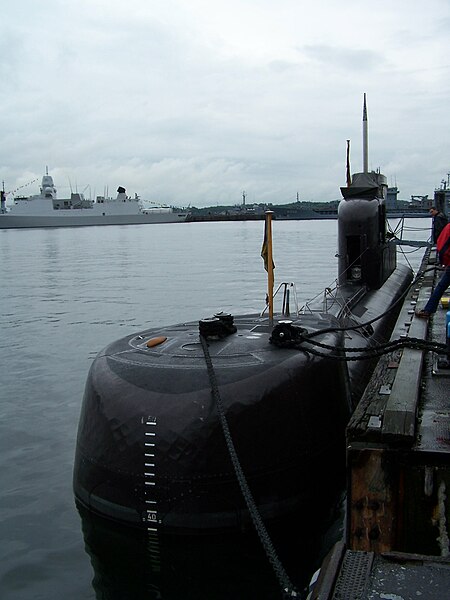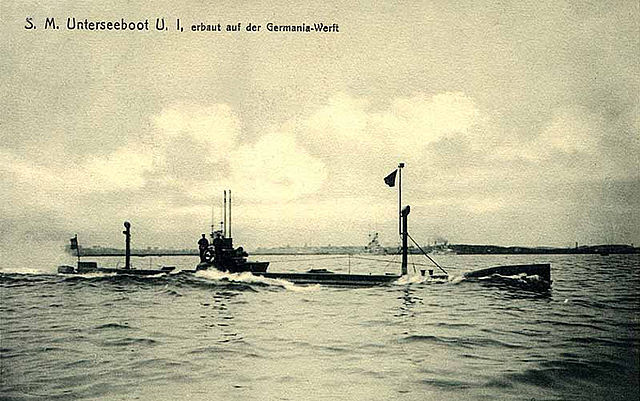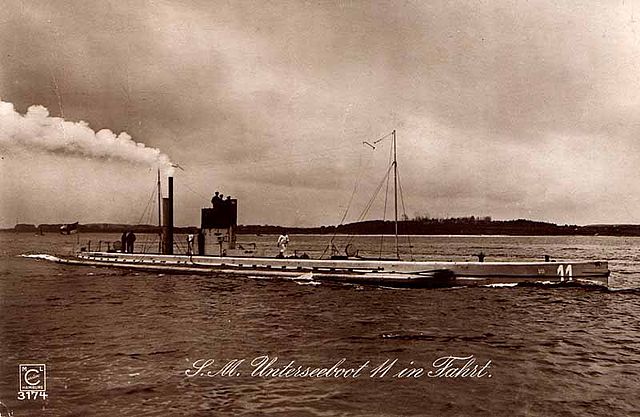The Type 206 is a class of diesel-electric submarines (U-boats) developed by Howaldtswerke-Deutsche Werft (HDW). Its design is based on the preceding Type 205 submarine class. These small and agile submarines were built during the Cold War to operate in the shallow Baltic Sea and attack Warsaw Pact shipping in the event of military confrontation. The pressure hulls were built out of non-magnetic steel to counter the threat of magnetic naval mines and make detection with MAD sensors more difficult. The low emission profile allowed the submarines in exercises to intrude even into well-protected opposing forces such as carrier formations with their screen.
U15 at Kiel Week 2007.
U15 of the German Navy
U22 of the German Navy on a special forces exercise
U-boats were naval submarines operated by Germany, particularly in the First and Second World Wars. The term is an anglicised version of the German word U-Boot, a shortening of Unterseeboot, though the German term refers to any submarine. Austro-Hungarian Navy submarines were also known as U-boats.
U-995, a typical VIIC/41 U-boat on display at the Laboe Naval Memorial
The first German submarine, the SM U-1.
The German submarine U-14, showing the kerosene vapour trail.
Sea mines are loaded in a UC coastal submarine in the harbour of Zeebrugge







